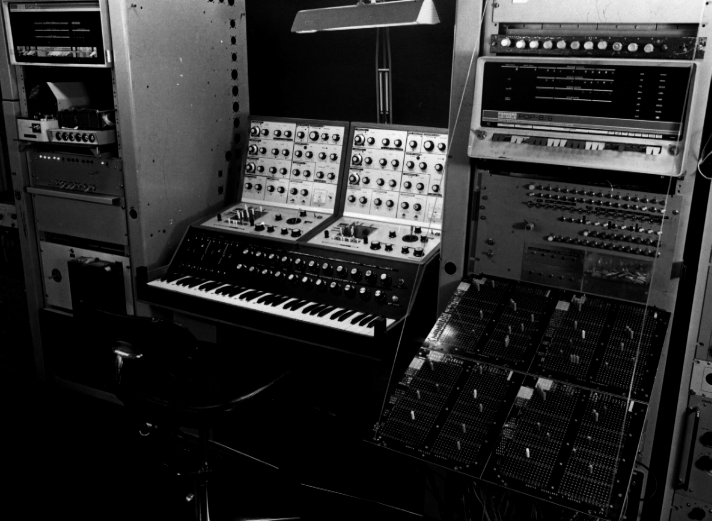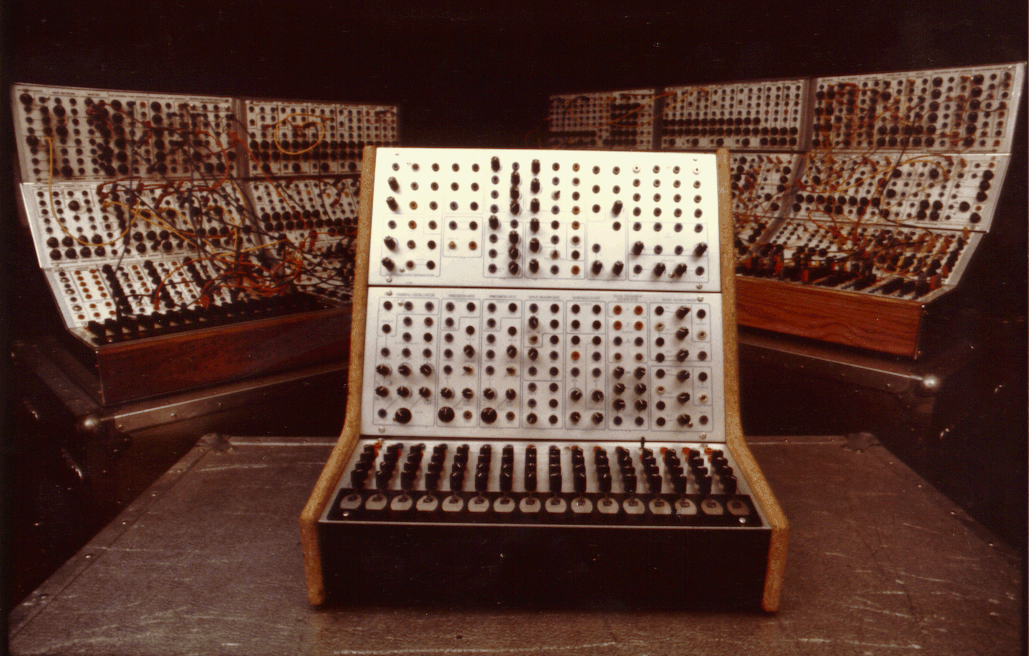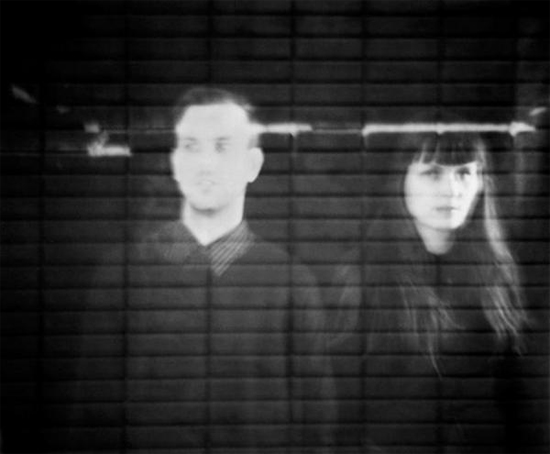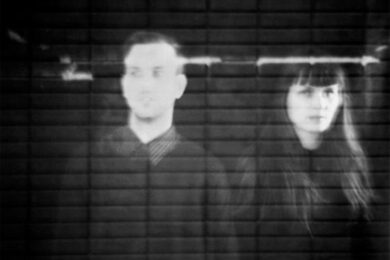If a record plays to an empty dancefloor, does it make a noise?
There’s a new sound in New York City. OK, not a new sound, exactly – but try to dig back to its roots and you come up with little. Skeletal discographies. Blurred Polaroids. Cryptic biographies in foreign languages. Lost histories and loose ends.
Wierd Records thrive in this territory. Pieter Schoolwerth, the DJ and conceptual artist who started Wierd as a New York club night in 2003, has a buzz-phrase for the music he loves, which he uses liberally and often – “Very Rare”.
“Very Rare” applies to a specific dancefloor sound – a generational movement that spread over Europe and across the world during the early 80s, but produced few huge bands or big stars. There are many names for it: synth-wave, minimal wave, Germany’s Neu Deutsch Welle or France’s vague froid – literally, "cold wave". All, though, refer to a broadly similar style: romantic, often electronic-tinged DIY post-punk inspired by Bowie’s Berlin period and Factory Records, Cabaret Voltaire and The Normal – DIY in spirit but powered by an inexorable, robotic pulse.
“The original waves of both the cold wave and the minimal electronic bands were a phenomenon that occurred entirely outside of metropolitan areas like Paris, Berlin, or Amsterdam," says Schoolwerth. "Many of the most important bands were from the suburbs and small towns, and I think this sense of ‘isolation’ from commercial, metropolitan media informed the music’s expressive sense of longing for community or connection."
Much of this music has been collected in compilations, most recently Cold Waves And Analogue Electronics Volume One, a compilation pieced together by Schoolwerth and Joe Daniel of British label Angular, which hits shelves this February. This piece, though, is about Wierd’s modern output: two of the bands formed by clubbers who flocked around Wierd’s weekly parties, fell in love with the music, and set out to carry its torch into the 21st Century.
One of the key figures in the Wierd’s community is Sean McBride, who has recorded some of New York’s earliest new-wave analogue electronics under the names Moravagine and then Martial Canterel. Along with a French/Norwegian artist named Liz Wendelbo, however, he records as Xeno & Oaklander, and the duo have just released their debut album Sentinelle – a spectral masterpiece of crisp synth-pop that’s perfectly poised between human fragility and the cold pulse of machines.
How, when and where did you both meet? And when did Xeno & Oaklander as we know it come together?
Sean McBride: We met in Brooklyn in 2003, shortly after which Xeno & Oaklander began. Being a male/female minimal synth duo in New York was rather novel, and Liz was pretty much the only woman in the synth scene at the time, which was predominantly made up of guys. We immediately recorded our first two songs ‘Zurück’ and ‘Départ’ and clicked musically right away. These early recordings took place in a tall and disused factory building I used to live in by the East River.
Sentinelle is your first full-length album, although you’ve been recording and playing together for some time – why did the album take so long to come together? Has it been planned for some time, and did you have something in special in mind for it?
SM: For Sentinelle we focused on song structures and more importantly recording a fresh group of songs taking full advantage of the arsenal of synths and step-sequencers we had in our studio.
Liz Wendelbo: We began writing material for the album in July of 2008 in our home studio in Brooklyn, having in mind that it would be released on vinyl. Many days were spent recording with our curtains drawn against the blazing New York sun. We had very particular ideas regarding mixing and mastering, and it took a while for us to find the right person – we found a studio, Grand Street Studios, which had an all-analogue mixing board, and analogue effects a few streets down.
Sean, you’ve been credited as pretty much kick starting the minimal synth revival in NYC through your solo music as Martial Canterel – how did you discover the music in the first place, and what were the early bands to fire your imagination?
SM: As a student in college, I was privy to a unique electronic music lab which had, at that stage in my development, some very esoteric and important pieces of synthesiser history. I remember first gazing upon the large four panel Serge modular synthesiser and not being able to fathom its monolithic sheet of symbols and diagrams. I soon realized the imminent and organic power underneath those obscure panels.
These old synthesisers are rather complex and required some years to organise myself around a system which would allow me to easily translate the studio practice into playing live. The system which I developed for myself and Xeno at large, consisting of multiple mono synths, step sequencer (Roland CSQ), several string machines, and often a preset rhythm machine has since initiated a kind of standard for some other synth groups playing live in New York.
As regards music which I was exposed to early on, I would have to of course cite Front 242 Geography, The Human League’s Travelogue and a little known Norwegian compilation, Burning The Midnight Sun whose many groups wowed me – it was quite dark, melancholic but without the spectacle and celebrity of so much coeval with it. It was as if these groups were writing soundtracks to a film depicting their own extinction. These groups led me to dive deeper into the annals of synth history – so many barely known bands around the world all seemed to be expressing something similar.
What is the appeal of analogue technology over digital? Are you purists about it?
SM: Analogue is alive. The flow of electricity from the wall shapes and contours through the synthesiser into waveforms which can be turned on and off, held or released, pitched up, pitched down, filtered to a mute murmur, opened up to a fierce growl – all of what the synthesiser outputs is analogous to the amorphous electric charge emanating from the wall. I liken the playing of these synths to a craft, the making of something with one’s hands. Perhaps akin to the ice sculptor’s chisel – it is a fragile and vulnerable balance between hand and tool.
Do you consider yourselves to be working in the same style and tradition as 80s artists using similar equipment, or do you feel like you’re bringing something new or innovative to the idiom? Is the idea of ‘innovation’ in this respect even important or meaningful, or are you comfortable with the idea of working within a tradition?
LW: We are more interested in working within a set of restrictions than within a tradition. Our analogue set up demands that we restrain ourselves to live elements only without the aid of a computer/workstation to create music. There is a sense of freedom and liberation when decision-making is limited to three or four monosynths, a 16 step sequencer, and some simple analog drum machines. Most bands of yesteryear did not crack the live aspect of synth music – when they played live on stage they often used reel to reel backing; live in TV studios they would lip-synch and their synths wouldn’t be plugged in.
SM: Many groups of the 80s provide a glimpse of the possibility for a certain kind of craft and approach – one synth, one basic rhythm machine, one voice capable of conveying so much, yearning for so much, utilising so little.
New York is such an iconic city, especially for music – does living there influence your music in any tangible way? Or would you basically sound the same wherever you came from?
SM: New York is a city built on capital, consumption and short-lived trends. The deliberate withdrawal which our music takes is a direct affront to these elements, a cultural bunker, a space whose foundations, built on negation, can eventually give rise to a more positive and humanist orientation. Having said that, there are many great musicians, artists, filmmakers, and writers living in New York who keep the discussion vital and interesting.
While generally quite abstract, the lyrics to songs like ‘Shadow World’ and ‘Werke’ seem to speak of discomfort or alienation from the modern world, and a yearning for something past or lost. Can you elaborate more to what you’re trying to evoke in your music’s lyrical content? It strikes me these are themes you share with a lot of neofolk or black metal artists, although the music of Xeno & Oaklander feels a lot more tender, vulnerable and emotional…
SM: One is daily confronted with the thinness of our times, the immediate absorption of things into transient commodities, the inconceivability of any true unity; our music is both a lament to modernity’s undoing and a rally cry to its confrontation.
You both sing, with distinct parts – how does the division of songwriting work?
LW: We think of the voice as being another instrument in addition to conveying lyrical content. Recently we’ve been engaging in a duet format whereby our voices come in and out and overlap. We both use delay and spring reverb to accentuate certain words or inflect specific voiced timbres. There is a book entitled Glas by Jacques Derrida who organizes the book by having several columns of text next to one another on the page; our lyrics function similarly.
SM: In contrast with Liz’s more classical approach, it is important for me to establish a cadence and rhythm for the voice and so often the final lyrics are written into a pattern informed by the aforementioned staccato cadence – sometimes taking on features of the language poets.

The record sleeve is fantastic – was there any particular reason behind the selection of the image? (The song ‘Saracen’ also seems to employ some of the imagery of ancient Rome, saracens and berbers, so I wondered if there was a link?)
LW: The cover artwork is the detail of a map (the same map as the detail used on the cover of Vigil’s) – an amphitheater at the Acropolis. We’re fascinated by archeology, excavations and unearthing the forgotten. We designed the artwork and took the photos – ephemeral polaroids – we wanted to express ideas of voyage, passage and transition, from one age to another, from dark to light.
SM: We fancied the idea of a Saracen, a Berber, an arcane wanderer whose trail is carved amidst the desert and dunes of the modern world.

Dropping at the same time as Sentinelle is Dust On Common, the debut LP from Led Er Est. It’s an anthemic take on cold wave that matches dissonant industrial textures with hooky choruses and dancefloor motion. The Quietus spoke to the band’s Shawn NoEQ, Samuel kKlovenhoof and Owen Stokes.
So how did Led Er Est come together? Were you in bands before?
Samuel kKlovenhoof: I met Shawn in 2007 at a weekly party he used to DJ at in Brooklyn. I ended up coming by there quite a bit, and eventually was asked to come play some records. I brought a track I had just made on a shitty Roland Groove box and played it. Shawn was into it and we started sharing the rough home recordings we’d both been doing. The band I was in at the time was rapidly disintegrating and I asked Shawn if he wanted to come over, have some drinks, and make some recordings.
We started meeting up twice a week and each session ended with one or two decent sketches. Our friend, Speculator, who introduced us, started producing the first handful of tracks that were aired on Veronica Vasicka’s radio show, then called Minimal-Electronik Plus. We were approached by Pieter Schoolwerth, to come play the Wierd party soon after, and we agreed. We knew we needed another person to play the lead synth parts, and since Shawn had a history of making music with him, Owen was happily recruited.
What was your first exposure to the cold wave/minimal electronics sound?

Shawn NoEQ: While I don’t recall a specific first exposure, a few songs that initially struck me deeply were: Twilight Ritual’s ‘I Never Called You a Dream’, Absolute Body Control’s ‘Figures’, No More’s ‘Suicide Commando’, Ceramic Hello’s ‘Footsteps In The Fog’. For several years prior, I had been collecting and DJ-ing synthpop, early industrial, post punk, Italo disco and electro (I was particularly invested in the Hague electro scene). Throughout 02 and 03, general awareness of some of the more canonical minimal electronic bands – Transparent Illusion, John Bender, Guerre Froide, The Actor, and the above mentioned acts, amongst others – really started to spread. This spread was facilitated by the infamous Flexi Pop bootleg compilations, as well as the excellent Genetic Music label.
It was a revelation, hearing this stuff, just the kind of the music that I had always hoped existed – a synthesis of the alien textures, icy rigidity, and thematic complexity of the electronic music I loved, with the fragility, humanity, and raw DIY spirit of post punk.
Wierd seems like something more than a record label/club night, more like a rallying banner for an international roster of artists with a shared aesthetic taste and mindset… how did you get involved with them?
SN: In 2005, I heard Martial Canterel’s first album, Confusing Outsides, and fell in love with it. Skirting the traps that marred most contemporary electro-wave, it felt "authentic", but it also wasn’t simply a regurgitative retro-fetishist pastiche – it was real, heartfelt music. I was excited to discover he lived in Brooklyn, but I didn’t get to meet him until a year later, when he played a live show at ISS., a great party that Sam and DJ Speculator used to throw.
Sam and I started frequenting the Wierd party after that, eventually becoming friends with Pieter and Glenn. It was great coming to this night, hearing all this obscure music that I had figured that not many people really knew or cared much about, at least not in New York. Not only would I go out to hear songs I loved by Martin Dupont or Linear Movement, but also to find out about stuff I’d never heard before – Peche Mortel, 18:e Oktober, Carmody, and other woefully obscure outfits that only released on cassette. And unlike most music nerd-oriented parties I’d been to, people really DANCED at Wierd!
How long has Dust On Common been in the works? Is it just a collection of songs you’ve been playing out, or is there something more cohesive at work?
Sk: We began working on Dust On Common back in the summer of 2008. We recorded it ourselves so naturally took a lot longer than it would have had we worked with a producer in a real recording studio. We decided early on we wanted to make a proper ‘LP album’, not just a collection of songs, so we trimmed it down from eleven to nine songs, all of them (aside from the early ‘I Wait’) recorded live in one take with only a couple of overdubs aside from the vocal track. There were many different versions of each song, done on different days, or recorded in different places so it took a while to figure out what worked best. We finished the album in September 2009.
Sound-wise, you seem to walk a tightrope between dance music and something more abstract/abrasive – to what extent do you think of your music as dancefloor fare, and have you found it works to move a crowd while still employing harsher synth/noise textures?
Owen Stokes: The predominant form our music takes is the pop song. As a structural style this is dancefloor friendly. As an organising principle for sound, there is an enormous variety of sonic experimentation that can take place within the pop song. We don’t have a great interest in making mindless music. We always attempt to challenge ourselves and our listeners with sounds which might not be associated with pop music.
I’ve been considering the question of what constitutes abstract sound and there are some things which come up over and over. One is the absence of a recognisable tone or note and this seems to be the most immediate and intuitive way to generate abstract sound. This is also what you might be referring to in our music as abrasive or harsh. This kind of sound confronts the listener in way that forces engagement with a song on a different level than say a string or organ sound might. Another way to generate abstract sound is to use samples. The sound of a stranger’s voice that comes out of nowhere, a field recording of ice breaking, all of these complicate the textural life of a song and make it more layered. Integrating the abrasive abstract sound qualities in a pop structure has proved to be fruitful territory that we will continue to explore.
There are other methods however, in which the structure of a song is not imposed by us but rather determined by the kinds of sounds used. Their duration left up to their relative substance. How long can a sound be sustained and still remain interesting? There is certainly much more work to be done in determining answers to these questions.
What is the appeal of analogue technology over digital? Are you purists about it?
SN: Well, obviously there are purely sonic issues at hand. But perhaps more importantly, working with MIDI or laptops pushes electronic music further towards the realm of computer programming – total immersion in a solipsistic, de-materialised phantom world. The spontaneity and physicality of performance are greatly diminished, if not lost entirely. Oddly, this is an often overlooked factor, but it changes the way one thinks about writing and making music on a very fundamental level.
Working with analog synthesizers and sequencers that utilize CV offers a tangibility and "realness" that cannot be replicated on a flat screen – this isn’t hardline dogmatic drivel or the voice of nostalgia, but a very real, practical concern. I spent many years making music on laptops (with some MIDI gear as well), but never felt that any of my work had merit until the laptop was abandoned as a sound source or sequencing tool. That said, we are not "analog purist" inasmuch as we do sometimes use digital synthesizers and drum machines (most notably the Roland TR-707), and I am even not ideologically opposed to playing around with hardware MIDI sequencers again in the future. But the laptop’s only role is as a recording device.
Can you see the label and the cold wave/minimal electronic sound continuing to grow in popularity?
SN: We’re wary of revivalism and arbitrary genrefication (for me, "cold wave" is a term that is a bit hard to casually bandy about unless you’re talking about mid-80s French bands). But we are genuinely very excited about a lot of the music our friends and peers are making these days. Martial Canterel and Xeno and Oaklander go without saying, obviously, but there’s dozens of recent acts all over the globe championing rugged, vital, DIY electronic pop music – Epee Dubois, Figure Study, SSPS, Further Reductions, Mazing Vids, Death Domain, Silk Flowers, Human Puppets, Blank Dogs, Light Asylum, Ramiro Jeancarlo’s projects Opus Finis and Staccato du Mal, Frank Alpine, Automelodi, Frank Just Frank, Agent Side Grinder, Music Cargo and many others.
Whether projects this aesthetically and geographically scattered could constitute any kind of cohesive movement is up for debate (and whether that movement would be labeled "cold wave" a further contentious point), but we do think this is a great time to be involved with making music, and feel a strong spiritual and musical kinship with many of our peers. And whether or not it becomes more popular is irrelevant – the music speaks for itself.
Xeno & Oaklander’s Sentinelle and Led Er Est’s Dust On Common are out now on Wierd. They get a proper UK release in March




